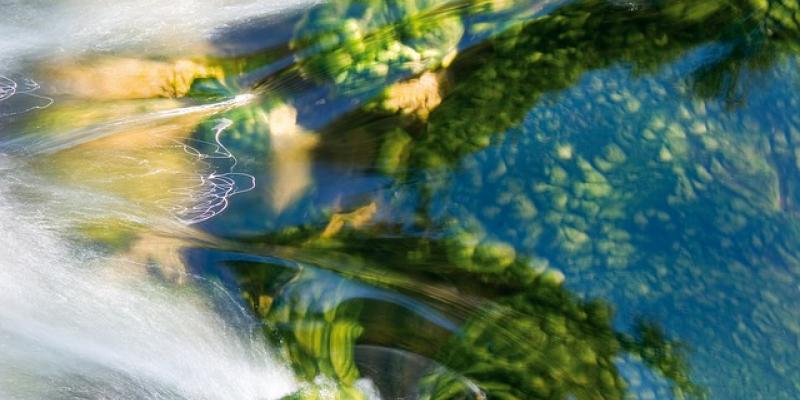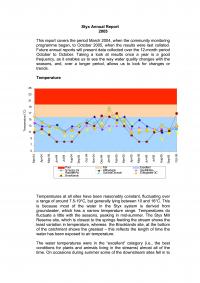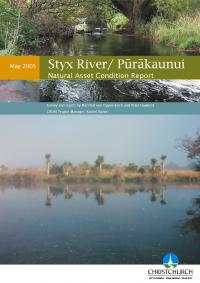Water Velocity
Water velocity is a measure of how fast the water is flowing. The unit of measurement for water velocity is metres per second (m/s), which refers to how far the water can travel downstream in one second. Water velocity is affected by three factors, namely the steepness of the gradient of the stream, the width of the channel, and the depth of the water.
Water velocity and water depth influence what type of fish and aquatic invertebrates can survive in the area. Some invertebrates, known as 'clean water taxa', prefer areas with fast flow, but there are other aquatic invertebrates and fish that can only survive in fast flowing water.
Stream velocity also affects the amount of silt and sediment carried by the stream. Sediment introduced to quiet, slow-flowing streams will settle quickly to the stream bottom. Fast moving streams will keep sediment suspended in the water longer. Additionally fast-moving streams generally have higher levels of dissolved oxygen than slow streams, because they are better aerated.
Water velocity can change over time, often as a result of variations in how surrounding land is being used. For example, in urban areas there are a large amount of impervious areas such as roads and driveways. This means that when it rains, water cannot soak into the ground; instead it flows into storm water drains and pipes where it is transported and discharged into a stream. This process results in rainwater entering streams more quickly than would happen if it had been allowed to soak into the ground. Additionally, because less water soaks into the soil, less groundwater is available to recharge urban streams during dry periods. Urban streams therefore are prone to experience frequent fluctuations in water depth and velocity.
By monitoring water velocity regularly over a period of time, changes can be observed and any resulting variation in aquatic invertebrate communities noted. These data can also be used to determine whether changes in factors being monitored (if any) are being influenced by the altering usage of land within the catchment.
Site preparation
In order to accurately measure the velocity and depth of a selected monitoring site during the first visit some preparation is required.
Firstly the site is marked out as shown below by laying a tape measure along one of the banks for a distance of 10 metres. The site needs to be marked out at the zero, five and ten metre points. This can be done by inserting a marker peg in the ground at these three points, by taking GPS readings, or by measuring and recording the distance from either the upstream or downstream point to a permanent feature such as a bridge or culvert.
Water velocity is measured by timing how long it takes for a floating object to travel the distance between the 0 marker and the 10 metre mark. Two people are required to measure velocity, plus a tennis ball, a stopwatch and a net with an extendable handle.
One person is responsible for throwing the tennis ball into the water upstream of the first marker peg and for noting when it passes the top marker peg.
The second person is responsible for timing the passage of the tennis ball and retrieving it after it has passed the bottom marker peg.
- Standing at the top marker, the first person throws a tennis ball into the main flow above the marker, and calls for the stopwatch to be started as the ball passes the top marker.
- As the tennis ball passes the marker at the end of the 10-metre course timing on the stopwatch concludes.
- The tennis ball is retrieved using the extendable handled net after it has passed the downstream marker.
- The time taken for the tennis ball to travel the 10 metres is then logged on the datasheet.
- The above steps are repeated twice more, in order to obtain a total of 3 recordings. All times are recorded in seconds.
- The three reading are added together, and divided by 3 to give 1 average reading.
- The average rate of velocity is then calculated by dividing the distance (10 metres) by the average time, and is recorded as distance (in metres) per second.
If the tennis ball touches anything as it is floating through the 10-metre course that reading should be discarded and another reading taken.




